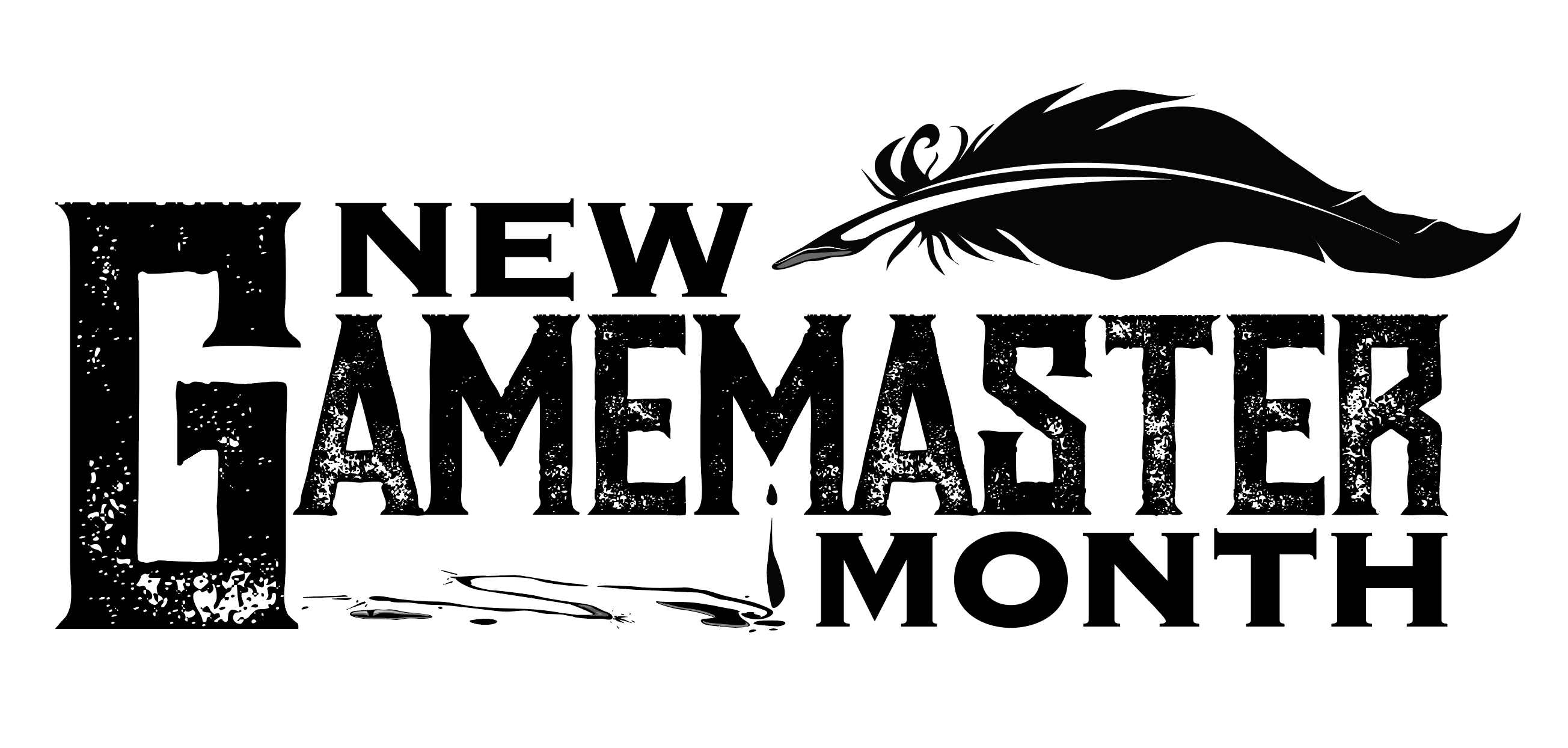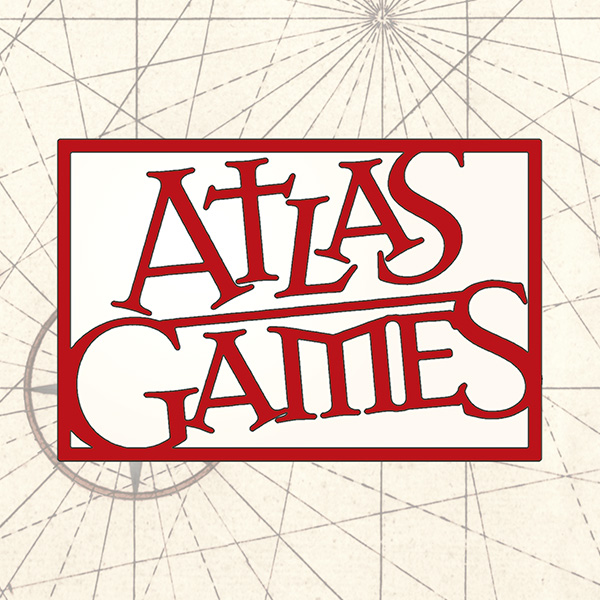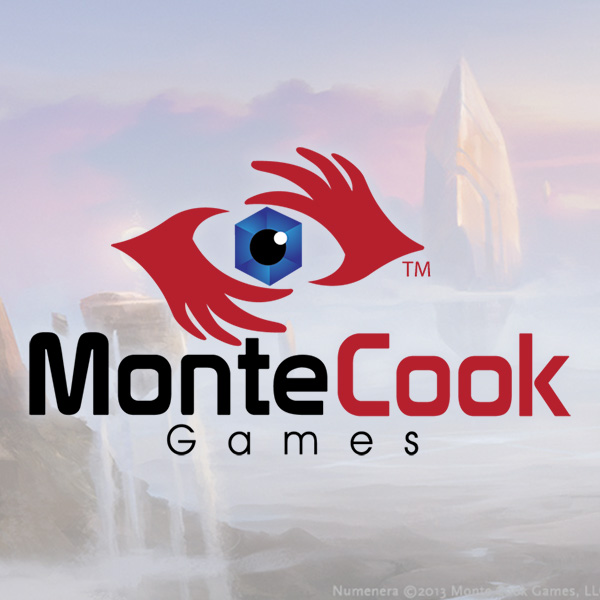Welcome to the third installment of New Gamemaster Month!

In New Gamemaster Month we’re helping players who feel the urge to run an RPG—to become a GM for the first time—take the plunge. If you’re just joining us, start with the first installment. Then join us every Tuesday and Thursday throughout January, and by the end of the month you’ll be a GM too!
This week we’re going to spend a little bit of time learning the rules and setting of your chosen game, and a little time digging into the adventure you’re going to run. Let’s do the rules and setting first, then look at the adventure in Thursday’s activity. But first, a note about how all this relates to other roleplaying games.
Just This Game?
When we go into the rules and setting in this program, we’re going to be talking about the game you’ve chosen: Numenera, Unknown Armies, Trail of Cthulhu, RuneQuest, Monster of the Week, or Delta Green. As you learn those things, you’re learning that game. But our goal is to make you into a competent GM—no, let’s say a great GM—in general. With the limited time and bandwidth we have this month, we can’t teach you the specifics of every game out there, but the process by which you’re learning applies pretty much to any game. In three weeks you’re going to run a great session of your chosen game. Take the general skills you’ve learned, spend a little time with the rulebook, and a few weeks later you could be running Savage Worlds or D&D or Pathfinder or Cypher System. In other words, the most critical skills you’re picking up are easily transferred to any and all of your favorite games.
What If I Already Know This Game?
If you’re already a pretty experienced gamer—and particularly if you’ve already played your chosen game—some of what we go into today will be old hat. That’s fine, but it’s worth it to at least skim your way through today’s activity. It may fill in a few gaps in your knowledge base, and it will definitely help build your confidence. And as we’ll discuss, confidence is one of a great GM’s biggest assets.
Back to the Rules and Setting
Rules and setting are really critical to GMing, right? Weeelll, sorta. Here’s what’s really critical: Creativity, nimble response, and an engaging pace of play. You know what kills those three things faster than a ravage bear in a cavot pen? Stopping too much to look things up in the rulebook and worrying too much about minor details of the rules and setting that don’t actually affect the quality of the game experience. To avoid that problem, you need to have:
- A strong enough foundation in your rules and setting so that you don’t slow down the game recalling or looking up key information.
- And confidence in that foundation.
Here’s what you don’t need:
- An encyclopedic knowledge of every facet of the rules or game universe.
In a way, these two sets of bullet points don’t seem to fit. Sometimes the minor details of the rules matter—sometimes they matter a lot. If you want to avoid looking things up in the book, you have to commit them to memory, right? No, not really, because there’s yet another important bullet point. You also need:
- Good judgment about when it’s better to slow things down to work out a specific detail or look something up, and when it’s better to keep the pace up even if it risks getting a minor detail “wrong.”
Developing that judgment comes from the strong foundation mentioned in that first bullet point, above. And don’t worry: As you GM more and more, those rules details and minor facets of the setting will build up in your brain, and your knowledge will become increasingly encyclopedic. That’s good, but it’s not critical to running a fun, entertaining, and memorable game. And, for now, we’re focused on what’s critical.
We’ll come back to some of that other stuff in a later post. For now, let’s start laying in that foundation.
Running Your First Game Virtually
You’ll need some resources to make a virtual game work. What sort of resources, and how much? That depends on your platform, your game, your personal style, and how much time and effort you want to put into it.
A game run over Zoom might need very little. The players will need character sheets (physical or digital), but that’s no different than in-person play. Some players and GMs like to roll their dice virtually (which you can do in Discord, for example), but rolling a physical die on the table next to the laptop is just as effective.
A virtual tabletop suggests the sorts of things you might put out on a real tabletop: battle maps, miniatures (typically called “tokens” in a VTT environment), and digital, in-platform character sheets. You do not need these items—they improve the experience, but aren’t strictly necessary. You may be able to purchase these elements from the VTT marketplace, either specifically for the adventure you’re running, or as generic items you can use for that or any other adventure. Or you can make your own.
For now, just think a bit about your platform of choice, and what you might want or need for it. We’ll go into more detail in a future post, so don’t go too far down this rabbit hole yet.
And for the sake of keeping your first game manageable, we highly recommend not going overboard. Any RPG can benefit from handouts, props, detailed maps, and similar elements (which we’ll talk about in a future New Gamemaster Month post), and VTTs in particular can encourage their heavy use. But they aren’t necessary for a great experience, and worrying too much about them can distract you from other important elements of a fun and successful experience.
It’s time to dig into the rulebook a bit. But first, here’s a video for you.
A Video to Watch
Watch this How to Play Numenera video (it’s about half an hour long, so don’t start until you have a chunk of time available). Feel free to enjoy it; you don’t have to take notes or commit anything to memory just yet.
A Little Reading
Once you’re done with the video, here’s a section of the rules to read through.
- Chapter 8: Pages 100-110 (Stop when you get to the header that says Ambient Damage.)
And some setting content:
- Chapter 9: Pages 130-135 (The entirety of the chapter.)
That’s a total of about 17 pages, so you might spend a little time on it. If you’re new to the Cypher System and some things don’t make sense right away, don’t lose too much sleep over it yet. RPGs, like almost all games, are easiest to grok by playing rather than by reading the rules. But if you’d like a little help with anything you read, don’t forget about the New Gamemaster Month Facebook group!
Enjoy the video and your reading, and we’ll talk again on Thursday!
Unknown Armies has fewer rules than some other roleplaying games. That said, there are some rules that are important for all GMs to know so you and your players can truly enjoy playing this weird but fun game.
What Rules To Read
At the core of the Unknown Armies rules is the idea of rolling percentile dice. This means using two 10-sided dice where one is the tens digit and the other is the ones digit. (So rolling a 4 and a 3 means you rolled 43.) That’s easy to grasp. For the rest, you just need to read some parts of Book One: Play.
- For how to use the dice in different ways, read pages 14-15. These two pages explain some unique Unknown Armies ideas like flip-flops and hunch rolls.
- Pages 19-21 cover the shock gauges that help make Unknown Armies a horror game — and help you to provide engaging consequences for working in the occult underground.
- Skim through pages 30-36 for a better understanding of character abilities. Players will refer to these often during a game session, but you don’t need to memorize them or anything. For example, just know what Struggle covers (and what it doesn’t).
- Every character has a few identities that help describe who they are, so read pages 42-45 for how they work, and see the examples on pages 50-53 to get a better idea of what identities look like.
- Passions (fear, rage, and noble) and obsessions help to further define a character, and they can affect die rolls at times. Read page nine for more info.
- Characters also get to affect die rolls with their relationships, so it helps to read through pages 37-40.
If this starts to feel intimidating, remember that GMs do not need to memorize all of this! You will always have the game books right next to you for the entire game. Read and understand them, but don’t let them drag you down. And if you ever have questions about the UA rules, ask them online at places like the New Gamemaster Month Facebook group.
A Sandbox-y Setting
Unlike some other RPGs, there really isn’t an official setting for Unknown Armies. Sure, there are plenty of particular cabals and unnatural entities that will pop up in any UA game, but this setting is more a sandbox than a licensed property. That means you and your players will help build the details of the world together. This makes things things a lot easier for a new GM.
That said, here are some elements that every UA setting should probably have:
- You play in the modern world, with everything good and bad that comes with it.
- Magick — spelled with a “k” to show it’s not something done on a Las Vegas stage — is rare and depends on an obsession to be used. (That’s why your average person doesn’t use it or even know it exists.)
- The player characters are part of the occult underground, a loose collection of people united by their knowledge that magick is a thing.
- Avatars are people who get power by emulating an archetype like The Warrior or The True King. Adepts, on the other hand, are people who get their power from schools of magick like cinemancy or viaturgy. As a general rule, avatars have few powers but can use them often, whereas adepts have many powers but must use them judiciously.
Above all, the Unknown Armies setting should be mysterious, wonderous, and scary. This isn’t Harry Potter; it’s more like Fear & Loathing in Las Vegas.
A Note About Horror and Mystery
Unknown Armies is more weird and mysterious than scary, but horror is definitely one of its elements. That means you should talk to your players at the first game and ask if there are any topics or scenes they would find uncomfortable in a bad way. Read the sidebar “The Trigger Warning” starting on page 15 in Book One: Play for more info.
In addition, remember that gore is only one part of horror. Use it too often, and it loses its power. Focus instead on mystery. Realizing you don’t know something can be very unsettling.
There you go. Your activity this time is to read (but not memorize) the rules up above that are found in Book One: Play. We’ll be back on Thursday to talk about adventures and objectives. Don’t worry, players will help make these too!
It’s time to dig into the rulebook a bit for more rules and setting information. Read through these sections:
- Clues, Tests and Contests: The core rules are on pages 51-58. There are more special-case rules in the rest of the chapter, but you don’t need to read those yet – just take a quick skim. These rules cover the two key aspects of the GUMSHOE rules: the clue-finding, always-succeeding Investigative Abilities, and the danger-defying, roll-and-pray General Abilities.
- Read the descriptions of the various abilities on p. 28-48. You don’t need to know them in detail, just get a taste of what sort of investigative tools and abilities the players have.
- Ghouls: Page 133 is the relevant part of the Cthulhu Mythos chapter for Midnight Sub Rosa, but you should also take a look around the rest of the chapter to marinade in the Mythos.
If you’re new to the GUMSHOE system and some things don’t make sense right away, don’t lose too much sleep over it yet. RPGs, like almost all games, are easiest to grok by playing rather than by reading the rules. But if you’d like a little help with anything you read, don’t forget about the New Gamemaster Month Facebook page!
Enjoy your reading, and we’ll talk again on Thursday!
It’s time to dig into the Rules book a bit further, re-reading anything that wasn’t clear while you were playing the SoloQuest and refreshing your memory about how the book is organized and where things are. It is not important at all to know how to do everything before you begin! You should keep in mind that you may need to look stuff up, refer to specific rule sections, and your players should also be ready to accommodate the process of you all learning the rules together.
For now, though, if you’ve played through the SoloQuest you know how melee, mounted, and ranged combat work. You know how spells work—both the less powerful spirit magic and powerful Rune magic. You know how armor absorbs damage, and how to parry or dodge to avoid taking damage, and you know how to measure the quality of success—ranging from fumbles to criticals—when the dice hit the table. You are covered.
The most important things to take away from the rules reading is how to roll and read dice, the different levels of success, how to read a character sheet, and the concept of augments using skills, Passions, or Runes. Once you’ve got an understanding of how those mechanics work, most of the rest of the rules fall into place.
We’ll talk again on Thursday!
Setting
Our sample adventure, Dream Away the Time, is set in the present day, in the village of Handfast. We know it has a forest nearby and was settled in 1615. The rest of the details are left open for you to tailor and improvise. Think about what this village is like in the modern day. What country is it in? Is it a sleepy little town or an up-and-coming suburb? Don’t worry about getting every single detail nailed down, the players can also help contribute during the game. Just think about what you want Handfast to feel like – whether that’s suburban dystopia, darkly whimsical fairytale, or something else altogether.
Rules in a Nutshell
If this is your first time playing a game Powered by the Apocalypse (PbtA), there are three key concepts you should read and review: Playbooks, Ratings, and Moves.
Playbooks represent archetypes (e.g., the Spell-Slinger, the Mundane, the Expert, etc.). Everything a player wants to do with their character is in their Playbook. Important: there can only be one of any given playbook at the table.
Ratings represent how good each Hunter is at certain areas of monster hunting. They range from -1 (bad) to +3 (phenomenal) and add to the dice total when players roll for a move.
Moves cover situations where a hunter tries to do something normal people can’t do, something dangerous (like fighting), or something where the outcome becomes more interesting when we roll the dice (like when a Hunter tells a lie to an NPC). There are eight basic moves that every hunter can use. Each playbook also has its own special moves.
Keepers also get to make moves! A soft move threatens danger or foreshadows how things will get worse if the Hunters don’t act. A hard move doesn’t give the party that chance to react. They just suffer the consequence, whether it’s harm or an NPC dying, or whatever is appropriate to the situation at hand that triggered the move.
A final key element in PbtA games is that play is asymmetrical. The players do all the dice rolling. As the Keeper, don’t have to roll to see if your monster hits and does harm: if a Hunter’s roll triggers harm, it does harm – unless the hunters have a move which can prevent that harm. This way you don’t have to get bogged down in stats and fidgety dice rolls, you can focus on responding creatively and appropriately to the Hunters’ actions.
Sections to Read & Review: Before You Get Started (pages 25-27); How To Play, Big Magic, Fights, Harm, and The Luck Counter (pages 96-113); Dream Away the Time (pages 150-161) Running the First Mystery (pages 166-175).
If You’re Using Roll20
Explore the Roll20 character sheet by making a few sample hunter characters. Notice how choosing a playbook changes the options available, and how you can hide unused options. Check out the Hunter Moves Reference section right near the top of the sheet, which provides the players not only with a way to roll the dice but with detailed descriptions of the basic moves and a rules cheat sheet.
Welcome back, Handler. Last week’s actionables were as follows.
- Primary Objective A: Read “Last Things Last,” pages 41–48 in Delta Green: Need to Know.
- Primary Objective B: Collect player schedules for the first two weeks in February and find a time to play the game.
- Primary Objective C: Plan and prepare a meeting space, either online or in person. Gather materials needed as listed on page 6 of Need to Know.
- Primary Objective D: By email or chat, discuss the game with the players. Decide whether players will develop their own Agents or use the pregenerated Agents from Need to Know. Ensure everyone understands the nature of Delta Green and is ready to play its kind of horror.
- Primary Objective E: For an online game, schedule a brief online meeting to test software.
Today we learn about the setting of Delta Green and its rules. This is the skill-based portion of the course. Still, we’re going to keep in mind the big charlie-foxtrot that scheduling is likely to provide. We’ll keep it light.
Here’s What You Need to Know about Delta Green
Unnatural, alien forces threaten the survival of humanity. Certain isolated members of the U.S. national security apparatus have parceled out what paltry defense they may. Delta Green is a secret organization worming its way through the guts of American federal government and law enforcement. Like all things human, the organization’s effectiveness rises and falls. At times it has been a well-funded machine of state. At others it has been so far out of political favor as to be entirely unsanctioned and illegal. In the modern day, both states exis: an official version of Delta Green called “the Program” and an illegal conspiracy of “Outlaws.” Whoever you work with, the fight against the dark calls urgently. There is not much time left before the end. And there is much work left to do.
There: you understand all you need to know of the setting of Delta Green.
…yes, of course there’s more. But you don’t need to know more yet, and I’m not wasting breath on rookies. Let’s see if you even survive the first op first.
Now We Learn the Rules of the Game
Delta Green: Need to Know condenses this information admirably between pages 5 and 18 and pages 33 to 39, but allow me to SparksNotes the Cliff’s Notes. Here’s the absolute minimum reading required to run the game.
- Pages 41–48, “Last Things Last” (done last week)
- Pages 5–9, “Welcome to Delta Green”
- Pages 11–19, “What Is an Agent?”
- Pages 33–39, “Game System”
Sometimes It Is Easier to Work from an Example
Luckily, a number of resources are available. You can find the creators of Delta Green playing it on YouTube. Full Delta Green campaigns are available online on podcasts such as Role Playing Public Radio, Great Old Ones Gaming, and Black Project Gaming. There are many more of outstanding quality. Watch or listen as time allows.
That’s it for today. Light duty. Take it where you can get it.
Actionables:
- Primary Objective A: Learn the Delta Green setting (COMPLETE).
- Primary Objective B: Learn the game’s rules by reading Need to Know, pages 5–19 and 33–39.
- Bonus Objective: Watch or listen to actual plays of Delta Green.
This segment’s task is to set up your game on the platform. You’ll create a virtual setup—the space in which your game will be played. At game time you’ll invite your players in, but for now you’ll be the only one who can access it. You’ll take a few additional steps to set the space up and make it ready to play over the next week or two.
On Roll20, you can set up your game using a module purchased from our Marketplace, or make it completely from scratch. A purchased module populates your adventure with the resources you’ll need or want, including maps, tokens, and creature stats. When you make your own, you’ll upload or create those elements—as many or as few as you like.
To learn how to set up your game, follow along with our team member Kristin as she walks you through the basic steps. Click here for tutorial video!
Related Resources:
- Module Creation How to create a game with free or purchased pre-made adventures.
- Game Management How to manage game settings, invite players, create an LFG listing, include Game Addons, and more from the My Games and Game Settings pages.
Throughout this program, we have expert GMs on hand to answer questions and provide general support at the New Gamemaster Month Discord Server or the New Gamemaster Month Facebook group. Please drop in, join the group, introduce yourself, and ask any questions you might have. Other new GMs will also be there—it’s a great place to share your experiences and support one another. Hope to see you there!






